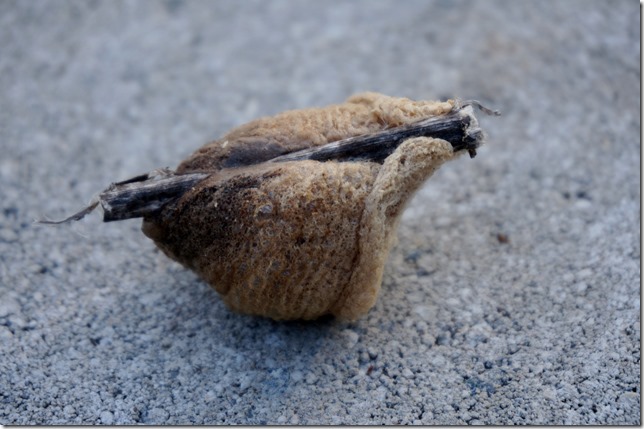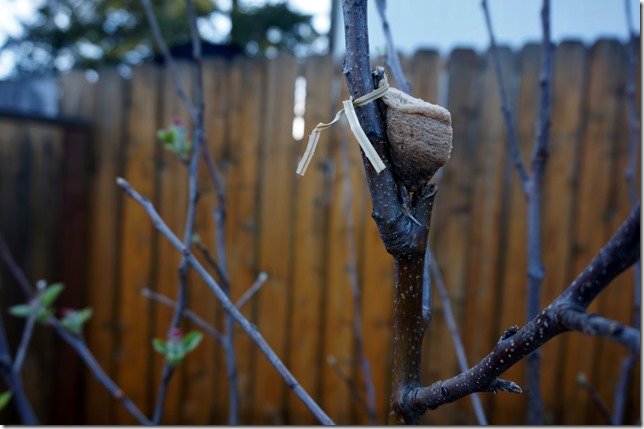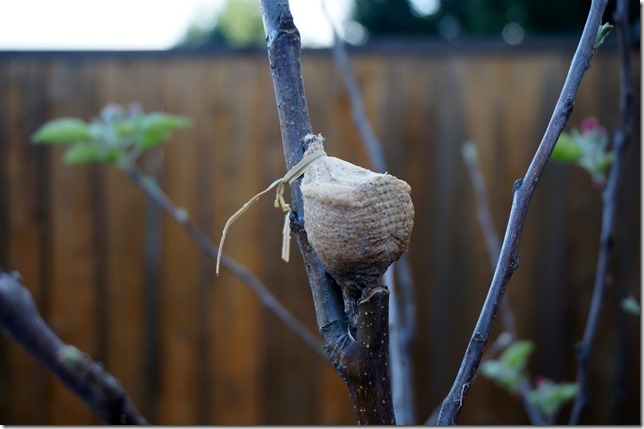It’s not every day that you find a Praying Mantis Cocoon at the grocery store…or in your shopping cart. But then again, not everyone goes grocery shopping with The Renaissance Man. His keen ability to find the most interesting items is superb!
I was in the garden section scoping out a trellis, and the next think you know I looked down to find a Praying Mantis Cocoon in our shopping cart sitting normally among the strawberries, frozen spinach, eggs, and shampoo.
Laughing out loud, I asked, “What…the heck…is this?”
I quickly read the back of the package and decided the cocoon was a rare find, and we had to have it!
Northwest Beneficials, the company that sells the cocoons, specializes in selling bugs to manage backyard pests. According to their website, one egg case (cocoon) will produce 100-200 baby mantises a.k.a. nymphs. Get ready, we’re going to have a “Praying Mantis Highway” in our backyard this summer!
Per the instructions, we placed our cocoon outside in the fork of our apple tree. Can you spot it in the picture below?
I used a twist tie to secure the cocoon to one of the branches, and now we wait. The cocoon should hatch open in two to three weeks, so I’ve been trying to check the cocoon every day to make sure I don’t miss the hatch out.
Apparently praying mantis are great at controlling unwanted pests in your yard, garden, or greenhouse. When they’re babies they eat small bugs like aphids, and as they get bigger they’ll go after almost any bug they can get their hands on including moths, mosquitoes, and flies.
I’m excited to see how this goes, and I’ll be sure to report back if I happen to catch the baby nymphs hatch!
And a piece of advice to all of the ladies out there…keep an eye on your shopping cart, you never know what you might find.







If praying mantis eat insects, do they also eat bees?
You bring up a great point, I was even able to find a few videos online of a praying mantis catching and eating honeybees. However, I don’t think they would pose a serious threat to a beehive given the sheer number of honeybees. I’ll have to run this by The Renaissance Man and see what he thinks.
Thanks so much for following along with the blog!